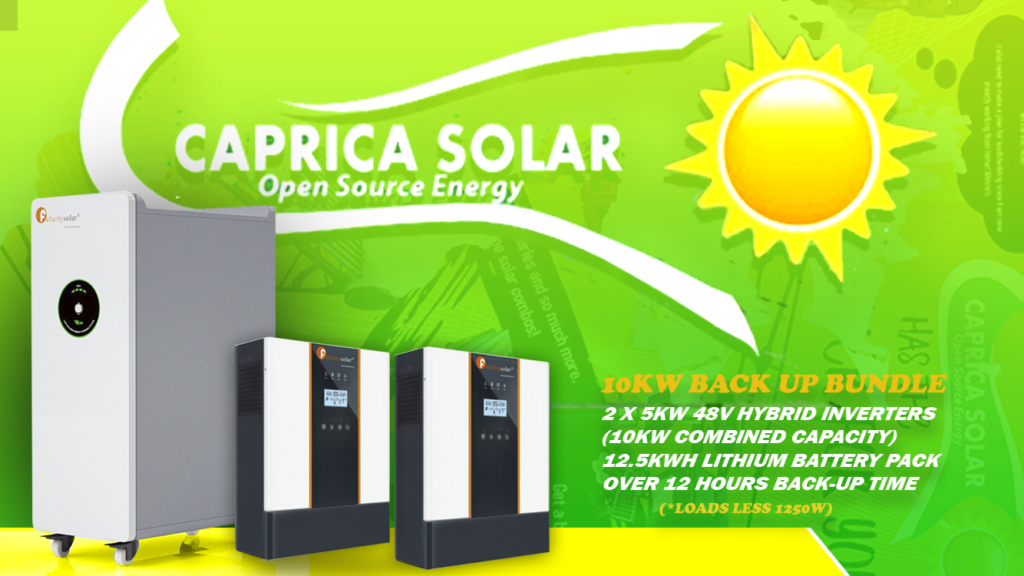Description
10kw Back Up Bundle with 12.5kwh Battery
5kw Hybrid inverters to be installed in parallel to make 10kw.
12.5kwh Lithium Battery for long run times.
Loads of 1250w allow you to run for over 12 hours.
Original price was: R70,000.00.R58,995.00Current price is: R58,995.00.


Shop Online
and fill your cart
Choose Payflex at checkout
Get approved and
pay 25% today
with your debit
or credit card
Pay the remainder
over 6-weeks.
No interest.
No fees.
10kw Back Up Bundle with 12.5kwh Battery
5kw Hybrid inverters to be installed in parallel to make 10kw.
12.5kwh Lithium Battery for long run times.
Loads of 1250w allow you to run for over 12 hours.
DELIVERY INFORMATION
Your order will be delivered to your door within 3-5 working days.
Returns Information
You have 30 days to return any unused products for any reason from the date of delivery.
If you are not completely satisfied, simply return the items to us in their original condition and packaging within 30 days of receipt and we will issue a credit which can be used to place a new order.
Exchanges Information
The item must be unused with the original tags still attached. Packaging should be returned in an undamaged condition with the item.
How do I order online with Caprica Solar?
How do I pay online?
How do I track my Caprica Solar online order?
What secure payment options do you offer?
We offer Direct Deposit and secure Instant EFTs with Payfast so that you can pay safely.
Are delivery or shipping costs included in my order or separate?
Delivery or shipping costs are not included. Shipping starts at R150. For larger items and installations, shipping costs are included.
Do you accept returns or exchanges?
Yes, we offer 30 day returns and exchanges. Please contact us for assistance, we’ll be happy to help.
How long will it take to get my order?
We take 1-2 days to process orders. It will take up to 5 working days to deliver your order. You will receive an email once your order is ready. So keep an eye on your email.





Reviews
There are no reviews yet.